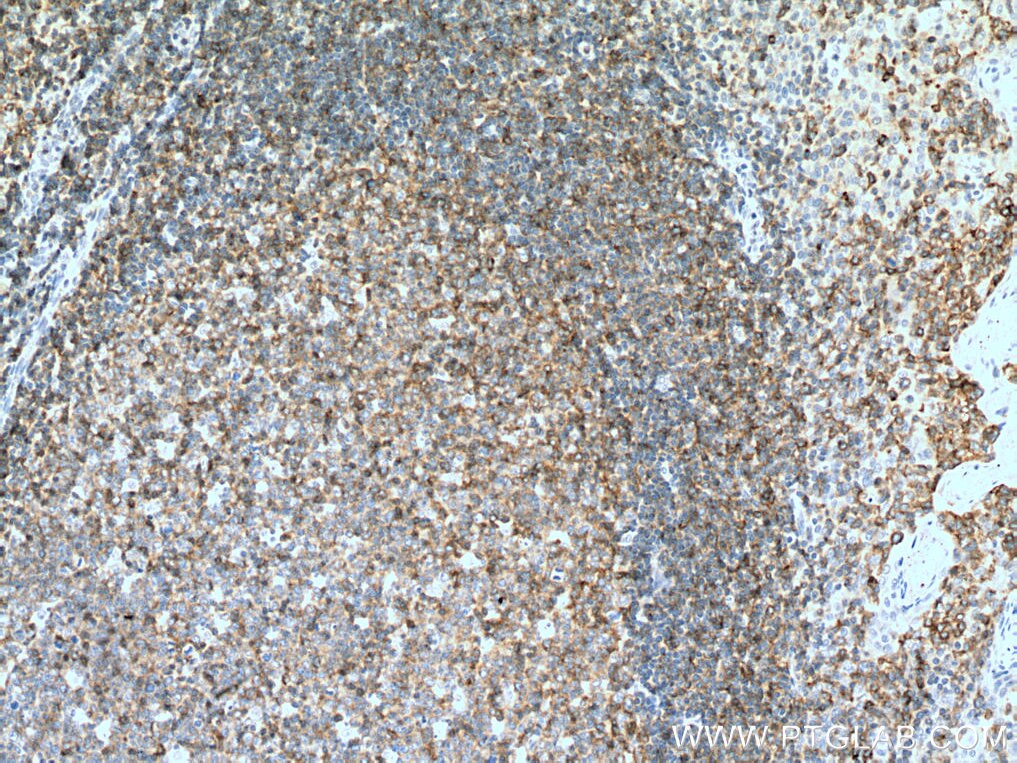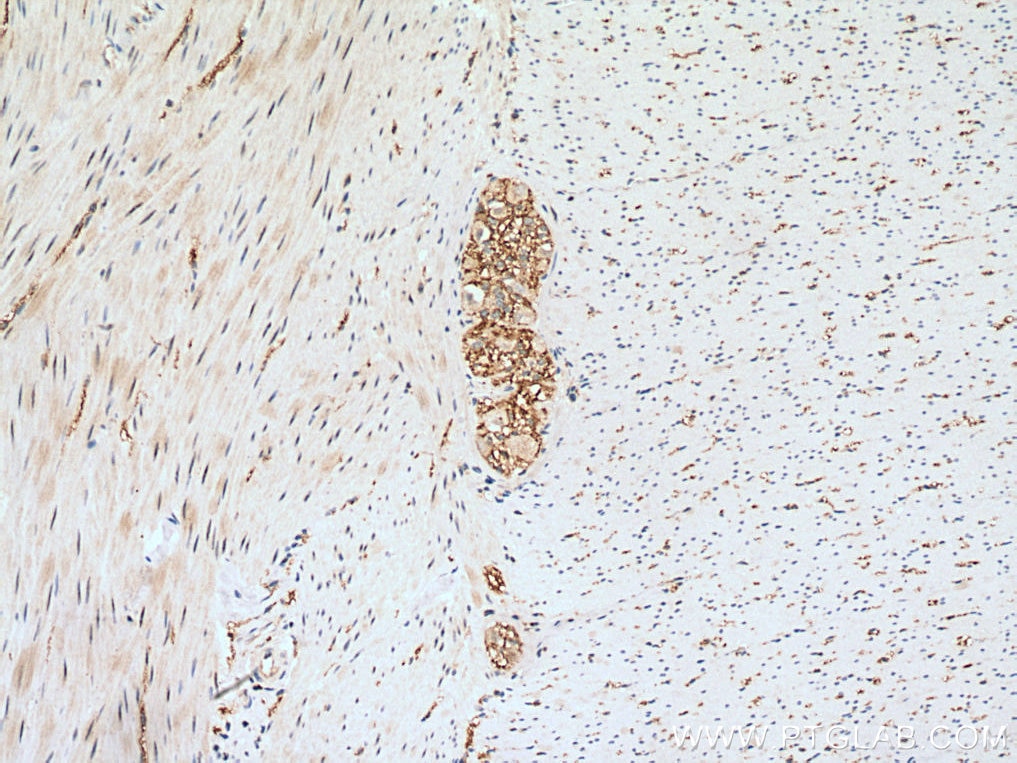Anticorps Polyclonal de lapin anti-CD100
CD100 Polyclonal Antibody for IHC, WB, ELISA
Hôte / Isotype
Lapin / IgG
Réactivité testée
Humain, souris
Applications
WB, IHC, ELISA
Conjugaison
Non conjugué
N° de cat : 27516-1-AP
Synonymes
Galerie de données de validation
Applications testées
| Résultats positifs en WB | cellules Neuro-2a, |
| Résultats positifs en IHC | tissu d'amygdalite humain, tissu de cancer de l'œsophage humain, tissu de côlon humain il est suggéré de démasquer l'antigène avec un tampon de TE buffer pH 9.0; (*) À défaut, 'le démasquage de l'antigène peut être 'effectué avec un tampon citrate pH 6,0. |
Dilution recommandée
| Application | Dilution |
|---|---|
| Western Blot (WB) | WB : 1:500-1:1000 |
| Immunohistochimie (IHC) | IHC : 1:50-1:500 |
| It is recommended that this reagent should be titrated in each testing system to obtain optimal results. | |
| Sample-dependent, check data in validation data gallery | |
Informations sur le produit
27516-1-AP cible CD100 dans les applications de WB, IHC, ELISA et montre une réactivité avec des échantillons Humain, souris
| Réactivité | Humain, souris |
| Hôte / Isotype | Lapin / IgG |
| Clonalité | Polyclonal |
| Type | Anticorps |
| Immunogène | CD100 Protéine recombinante Ag26461 |
| Nom complet | sema domain, immunoglobulin domain (Ig), transmembrane domain (TM) and short cytoplasmic domain, (semaphorin) 4D |
| Masse moléculaire calculée | 96 kDa |
| Poids moléculaire observé | 96 kDa |
| Numéro d’acquisition GenBank | BC054500 |
| Symbole du gène | SEMA4D |
| Identification du gène (NCBI) | 10507 |
| Conjugaison | Non conjugué |
| Forme | Liquide |
| Méthode de purification | Purification par affinité contre l'antigène |
| Tampon de stockage | PBS avec azoture de sodium à 0,02 % et glycérol à 50 % pH 7,3 |
| Conditions de stockage | Stocker à -20°C. Stable pendant un an après l'expédition. L'aliquotage n'est pas nécessaire pour le stockage à -20oC Les 20ul contiennent 0,1% de BSA. |
Informations générales
CD100 (also known as SEMA4D), a 150 kDa homodimer, belongs to the family of immune semaphorins, and CD100 is abundantly expressed on resting T cells, NK cells, and antigen-presenting cells. As a transmembrane glycoprotein, it is digested to its soluble form, sCD100, by specific matrix metalloproteinases. CD100 has been reported that the expression levels of CD100, and one of its receptors, plexin-B1 (PLXNB1), are increased in head and neck, prostate, colon, breast, and lung cancers, and the interaction between them provides oncogenic signaling essential for tumor growth and metastasis.
Protocole
| Product Specific Protocols | |
|---|---|
| WB protocol for CD100 antibody 27516-1-AP | Download protocol |
| IHC protocol for CD100 antibody 27516-1-AP | Download protocol |
| Standard Protocols | |
|---|---|
| Click here to view our Standard Protocols |








